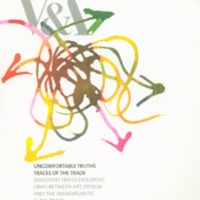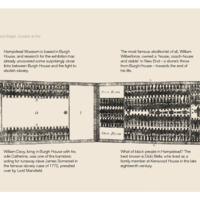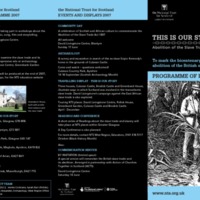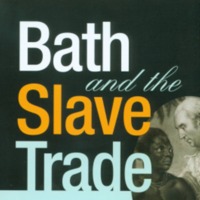
Uncomfortable Truths
Uncomfortable Truths at the Victoria and Albert Museum sought to expose how embedded the transatlantic slave trade was within British culture during the 18th and 19th centuries through art and design. A series of five trails - 'Traces of the Trade' - explored the permanent collections on display through the following themes: Consuming the Black Atlantic, Black Servants in British Homes, Britain and the West Indies, Representing Slavery and Abolitionism, Gold and Slaves Transnational Trade Links. An exhibition of contemporary art examined the impact of the legacies of slavery on modern art and design. The Victoria and Albert Museum commissioned new works by Yinka Shonibare, Romauld Hazoume, Julien Sinzogan and Keith Piper. These and other contemporary interventions by a total of 11 artists were displayed throughout the museum. This exhibition later toured to Ferens Art Gallery in Hull.
The 'Truth and Rights' season of events highlighted often untold stories of Black British heroes, including focus on the actor Ira Aldridge. Visitors were also offered discussions, debates, displays and an eight week free art course. A two-day conference, 'From Cane Field to Tea Cup: The Impact of the Transatlantic Slave Trade on Art and Design' focused on V&A collections took place in February 2007.

The Transatlantic Slave Trade: Hampstead Connections
An exhibition at Hampstead Museum (based in Burgh House) which examined the connections between Hampstead and slavery. It looked at how fortunes made in the West Indies funded the purchase of properties in this prosperous area, through men like William Beckford and Robert Milligan. Hampstead was also home to men and women tied to the abolitionist movement, such as Samuel Hoare. William Davy, living in Burgh House, was one of the barristers who acted for runaway slave James Somerset in the case of 1772, presided over by Lord Mansfield.

This is Our Story
To mark the bicentenary, the National Trust for Scotland put together a wide-ranging programme of events to engage their audiences with Scottish connections to slavery and abolition. Three National Trust for Scotland properties in the West of Scotland – Culzean Castle, Brodrick Castle and Greenbank House – illustrate the ways in which Scotland was involved in the transatlantic slave trade. A touring exhibition based on this new research was shown at these sites and others in the West of Scotland. The Beckford Collection of furniture, silver and China at Brodrick Castle, on the Isle of Arran, once belonged to William Beckford, owner of several sugar plantations in the West Indies. Scipio Kennedy from ‘Guinea’ lived at Culzean Castle, Ayrshire, from 1710, first as a slave and then as a paid servant. The Allason brothers of Greenbank House were traders in tobacco and slaves. David Livingstone spent much of his life campaigning against the slave trade based in East Africa. His work is remembered at the David Livingstone Centre in Blantyre.
The 2007 Learning Programme involved workshops for local community groups and a resource pack for teachers and youth leaders. Events included a celebration of Scottish and African culture at the David Livingstone Centre; a survey and excavation in search of the ex-slave Scipio Kennedy’s home in the grounds of Culzean Castle; and a Commemoration Service arranged in partnership with Action of Churches Together in Scotland (ACTS).

Bath and the Slave Trade
Bath Preservation Trust curated a series of exhibitions across five of their sites, with a focus on ‘unlocking the legacies of the slave trade'. Beckford’s Tower & Museum hosted Big Spenders: The Beckfords and Slavery; displays here and at the Holburne Museum were designed to explore the Beckford family connections to plantations in Jamaica, through objects, paintings and furniture. The Herschel Museum's Slaves to Fashion exhibition, and Number 1 Royal Crescent's Elegance and Exploitation trail looked at how involvement with the slave trade enhanced the luxury of 18th century life in Bath. At the Building of Bath Museum, Selina’s Web revealed the complex attitudes of Selina, Countess of Huntingdon, who sought to promote the publications of free slaves whilst also being a slave owner. A lecture series ran alongside these exhibitions.